- Home
- Peter Ackroyd
Revolution, a History of England, Volume 4 Page 6
Revolution, a History of England, Volume 4 Read online
Page 6
It would be hazardous to identify any specific reason for what became a period of significant innovation, in the later years of the seventeenth century, but some of the impetus may have been the result of the efforts of the Royal Society to investigate questions of drainage and crop rotation. When the level of prices fell in the early years of the eighteenth century there was even more reason to gather profit wherever it could be found.
The extent of further ‘enclosure’ was also one of the key agents of change. The ‘enclosure’ of land, making larger estates out of open fields and communal pasture, had been characteristic of English agriculture since the fourteenth century; it helped to arouse the Peasants’ Revolt of 1381 and Jack Cade’s rebellion of 1450. It became a matter of prominent public debate as a result of Thomas More’s Utopia, published in 1516, in which More had condemned the conversion of arable land into pastoral. It was a case, he said, of the sheep eating the people.
The rise of population, the finite nature of resources, and the price of foodstuffs combined to make land the most desirable of all goods. When feudal ties were broken, when the laws and customs of manorial society ceased to operate, the demand from the prosperous was for land and more land. In the sixteenth and seventeenth centuries it was an instinctive law of being. The more land you owned, the greater you became. The more powerful you were, the easier it was to take away the customary but unwritten rights of the peasantry to gather the gleanings of the crop or to collect firewood; control of land was thereby extended.
A new race of landowners sprang up, and soon enough the landed gentry were a large component of parliament. They were protected, therefore, but the small freeholders and the cottagers were not. Those with the benefit of property purchased small parcels of further land in various locations, planning one day to join them together; they gained the manorial rights of parliamentary boroughs; they bought up ‘advowsons’ or land granted to the parson. The landowners wished to see their own territory from horizon to horizon, where the fruits of the field would be plentiful. To him who possessed much, more would surely follow.
Until the middle of the eighteenth century these enclosure agreements were organized by private treaty, in which no doubt bribery and blackmail played their part but in which common sense and mutual benefit played the larger role. The owners of the greatest number of strips in the old communal system might decide to join together and exchange land, for example, in order to provide soil for crops and pasture for husbandry. Another method was that organized by private Acts of Parliament. The first of these Acts was introduced in 1604 but the golden age of parliamentary enclosure, if that is the appropriate phrase, took place after the middle of the eighteenth century. It is more than likely that the parliamentary commissioners, employed to survey or to mediate land under dispute, tacitly supported the cause of agricultural reform; that was the spirit of the age. As a result, however, the balance was tipped against the independent voices of rural protest or the grievances of the ‘little people’. It required the owners of approximately 75 per cent of the land to initiate proceedings, ignoring the large majority of smaller owners.
Once the farmer owned the land, however he had acquired it, he could do what he liked and had no need to consult his neighbours. The advent of better drainage, and the introduction of rotating crops, increased the yield; the hedging and fencing of private land, and the new building necessary for storage, helped to create a wholly new agricultural landscape. The larger farmers were in addition much more open to new methods that encouraged efficiency and productivity. This has been called the economy of scale, or the birth of an agricultural industry based upon market forces.
So the land of England was slowly changed. The distinctive ‘checker-board’ aspect of the domestic countryside, with hedges or dry-stone walls enclosing the fields, is a direct consequence of the developments of the mid-eighteenth century. At the beginning of the following century Thomas Batchelor, in ‘The Progress of Agriculture’ (1804), remarks upon the new landscape:
And hawthorn fences, stretch’d from side to side,
Contiguous pastures, meadows, fields divide.
The mellifluous balance of Batchelor’s verse can be contrasted with the enclosure riots, the counter-petitions against proposed enclosure, and the anger against the withdrawal of common rights in the immediate countryside. Many of the small farmers, and the cottagers, were relegated to the status of labourers hired for money according to seasonal rates. The landed gentry, the richer owner-occupiers, and the larger tenants were in effective control. The peasants and the yeomen (best understood as smaller owner-occupiers), once the staple of the agricultural hierarchy, were diminished and ultimately disappeared. It represented a social revolution in the countryside.
When parliamentary commissioners were sent to a district in order to judge the merits of enclosure they were often met with threats, absence of cooperation, procrastination and wild rumours of local devastation; these hostile and often embittered responses embodied the last stand of custom, habit and tradition under threat from the forces of commerce and efficiency.
Yet the process of enclosure did materially affect the fertility and profitability of the land. It is unlikely, for example, that the farmers could have fed an ever-growing – and indeed rapidly accelerating – population without the benefits of large-scale production. The advantage of newly introduced crops – from sainfoin (or ‘healthy hay’) to lucerne (or alfalfa), from clover to the ubiquitous turnip – was evident in the fertility of the land that enriched the farmers and fattened the cattle. It soon became obvious and practicable to engage in regional specialization. The hops came from Kent, and the honey from Hampshire; Aylesbury ducks became as well known as Norfolk turkeys. In 1770 Arthur Young remarked that in the previous ten years there had been ‘more experiments, more discoveries, and more general good sense displayed in the walks of agriculture than in an hundred preceding ones’.
It has been estimated that by the middle of the eighteenth century the labours of one-third of the population in the field were now able to furnish sustenance for the remaining two-thirds. This was in a period when the economy was still primarily one of agriculture, where the abundance of foodstuff was the most accurate measurement of health, vitality and standard of living. So it was that in 1797 the Encyclopaedia Britannica could claim that ‘without any improper partiality to our own country, we are fully justified in asserting that Britain alone exceeds all modern nations in husbandry’, even though no mention is made of the poverty, distress, dispossession and injustice that accompanied the change in agricultural conditions.
In this age of improvement, however, myriad societies grew up for the betterment of agriculture. It became one of the great preoccupations of the period. Tenants’ dinners and farming clubs became the venue for discussions on agronomy; local societies fulfilled a similar purpose and shows, such as the Bath and West, encouraged experiment and innovation among their participants. There was nothing more potent than competition from a neighbour. At a later date periodicals such as the Farmer’s Magazine and the Farmers’ Journal, were issued and, in 1754, the Royal Society of Arts instituted a prize for agricultural improvement. As a crowning glory, a voluntary society was established in 1793 known as the Board of Agriculture, which was in a later century transmogrified into the Ministry of Agriculture, Fisheries and Food. The same board went on to distribute many packages of Swedish turnips to all the regions of the country, and to organize Humphry Davy’s lectures on ‘vegetable chemistry’. The changes in agriculture were all part of the inventive and experimental spirit that had been evident since the middle years of the seventeenth century.
Talk of ‘improvement’, therefore, was in the air. The new discoveries in metals, mines and minerals were considered to be the harbinger of larger progress while the contemporary dispute between ‘Ancients’ and ‘Moderns’ was in part designed to correct the prevalence of ancient errors. Improvement trusts were soon to be established for roads, rivers and c
anals.
The spirit of enquiry was not always manifest in the higher echelons of the land. When a national census of population was proposed in 1753 it was condemned in parliament by the member for York as ‘subversive of the last remains of English liberty’ and ‘the most effective engine of rapacity and oppression’. When at last the population of Newcastle upon Tyne was counted, the result excited ‘universal surprise’ at the smallness of the total. The surprise derived from the belief that the population of the nation was fast outstripping its supply. The panic, like so many others, was without foundation.
Yet it is true that the trend of population was, from the early eighteenth century, only in one direction. It can be surmised that a population of some 6 million in 1714 rose to more than 6.5 million fifty years later; by 1781 it had reached 7.5 million and, by the beginning of the nineteenth century, 9 million. It was a history of continual, almost inexorable, development. It may be of some ancillary interest that by the middle of the eighteenth century the rapidly rising population was in the process of moving towards the north as well as to magnetic London.
The reasons for the rise in population have been variously stated. A decline in mortality, and an increase in fertility, are generally adduced as the principal causes; the absence of famine and the dearth of epidemic disease, the prevailing trends towards cleanliness, the increasing demand for labour, the abundance of food, the inclination towards early marriage and the growing success in the battle against sickness have all been cited. With such a wealth of circumstance the great work of fertilizing the soil, and feeding the population, could only go forward.
It was not a question of claiming domination over nature. This would have been considered blasphemous. But the results were clear. If you put the fleecy and fatty ‘New Leicester’ sheep of Robert Bakewell before the scrawny and ragged specimens of other farmers, the differences were obvious. Within the course of the eighteenth century the average weight of a sheep at Smithfield rose from 28 lb to 80 lb.
That power of change was not exclusively reserved for the beasts of the field. Beneath the soil lay the potential for transformations just as great. The first stage of industrial growth was marked by the transition from wood to coal, from organic to mineral, from a local and perishable source to a substance that seemed to be as old and as imperishable as time. Coal was the foundation. Yet first it had to be reached from the bowels of the earth.
The old fashion of excavating coal had been laborious and dangerous. The miners were lowered by rope many fathoms beneath the surface, where they took their place at the end of the track that they had already worked. They knelt, stooped or lay on one side in order to hack the coal from the main seam by means of pick, wedge or hammer; illustrations show them lying beneath immense layers of coal, as if they were likely at any moment to be crushed and obliterated. Their coal was taken away by pit ponies or by women and children who dragged large baskets from chains fastened to their waists. The hazards were everywhere, from gushing water to falling rocks and escaping steam, from asphyxiation by ‘choke-damp’ to suffocation in thick clouds of smoke and dust. Miners have always been associated with the dark and with subterranean depths; that is why they have generally been regarded with superstitious awe or irrational fear. They lived in darkness.
The inevitable cost to life was believed to be an economic, rather than a social, calamity. The loss of time, and men, meant loss of money. When the interests of the landowners and the mine-owners were at risk, of course, there was at least an incentive for remedial action. One of the most persistent and damaging problems was that of water gathering in the bases and hollows of the mines. ‘Horse-gins’, by which a wooden gear mechanism was driven by a horse trudging in a circle, bringing up buckets of water, was a first and not particularly efficient response; the contraption was also used to bring up coal.
The credit for the first ‘steam engine’, momentous though it may seem, is not certainly known. The palm is generally given to Thomas Savery who in 1698 patented his version of an atmospheric pump. An advertisement in the Postman of March 1702 recommended ‘Captain Savery’s Engines which raise Water by the force of Fire in any reasonable quantities and to any height . . . these are to give notice to all proprietors of mines and collieries which are encumbered with water, that they may be furnished with engines to drain the same’. The ‘fire’ was a furnace and boiler that provided the steam; the steam created the atmospheric pressure that moved the piston; the piston itself set in motion a pump. The menacing water was thus drawn off.
Savery’s engine was refined by a Dartmouth ironmonger, Thomas Newcomen, who by the first decade of the eighteenth century had devised an engine that could reach much greater depths. The first Newcomen engine was in use by 1712 and, at the time of Savery’s death in 1715, seven or eight were already in operation. Fifty more were erected over the succeeding twenty years; by the end of the century more than 350 had been installed. The success of the engine is testimony to its efficacy as well as its necessity, only eventually outperformed by the inventive works of James Watt.
It was not necessarily elegant, however, and Samuel Smiles records that
the working of a Newcomen engine is a clumsy and apparently a very painful process, accompanied by an extraordinary amount of wheezing, sighing, creaking and bumping. When the pump descends there is heard a plunge, a heavy sigh, and a loud bump; then as it rises, and the sucker begins to act, there is heard a creak, a wheeze, another bump, and then a strong rush of water as it is lifted and poured out.
The bulk and complexity of the first engines may have surprised contemporaries in the same manner as the early computers of the 1950s baffled the public. As with the computer, too, the most radical developments were not properly recognized or understood. The steam engine, for the first time, was able to convert thermal energy into kinetic energy. It turned heat into work. This was the source of power that would completely outstrip all previous resources, human or hydraulic, and would lead ineluctably to the enormous increase in industrial productivity that would one day earn the name of revolution. The wheezing and sighing engine changed the world.
5
The prose of gold
The late king had always nourished hopes of a union between Scotland and England, largely for defensive and military reasons; he did not want a Jacobite enemy at his back door, and over the centuries the Scots had notoriously been seen to favour the French. There had already been attempts at dynastic union between the two nations, but they had come to nothing. As dual monarch James VI of Scotland, who in 1603 also became James I of England, joined two crowns but not two realms; still, it was a precedent. Cromwell gathered Scotland in his embrace during the short-lived Commonwealth, but again the union fell apart.
Soon after the accession of Anne, however, a commission was established in 1702 to examine the long-standing dilemma. There was at first a signal lack of enthusiasm on both sides for the proposed arrangement. The leader of the Tories in the Commons suggested that union with Scotland was akin to marrying a vagrant ‘and whoever married a beggar could only expect a louse for her portion’. Yet reasons of state, and of defence, were more powerful than petty insults. In 1703 the Scottish parliament passed two Acts, of Security and of Peace and War, that threatened the governance of England. The Scots refused to confer their crown on the Protestant house of Hanover. They still yearned after the Scottish Stuart succession. The second Act declared that, on the death of the queen, the Scots would reserve to themselves any right of peace or war with both France and her allies. They might even withdraw their troops from Marlborough’s armies.
The prospect of an unfriendly power on the northern border concentrated the minds of the English politicians. The Whigs needed no persuasion of the need for union; their unequivocal support of the war, and their undeviating loyalty to the Hanoverians, made the choice inevitable. The Tories may in turn not have wished to seem openly disloyal to the queen or the administration, but in any case Anne took the precaution
of nominating only one of them to the English commission. So the negotiations took place in an atmosphere of relative good grace amply mollified by bribes and other less overt forms of chicanery.
The commissioners convened at the Cockpit, a suite of offices in Whitehall, during the spring and summer of 1706. The two sides did not meet but instead preferred to exchange written suggestions and proposals, liberally larded with cash and promises to sweeten the Scottish lairds. The Scots contingent also hoped for a large portion of what was known as ‘The Equivalent’, the sum paid by England to satisfy the creditors of the previous Scottish administration. The ‘treaty of Union’ can be considered as a deal brokered under the table, therefore, but many of the Scottish commissioners were already in favour of a union with England.
The Scottish economy had been severely damaged by the continuing and apparently endless war with France. With foreign ports closed to its exports, the country more than ever required free trade with England in such commodities as cattle and linen. There seemed to be no doubt that the economic consequences of union would be beneficial. Adam Smith, the high priest of the Scottish economy, later wrote that
The union opened the market of England to the Highland cattle . . . Of all the commercial advantages, however, which Scotland has derived from the union with England, this rise in the price of cattle is, perhaps, the greatest. It has not only raised the value of all highland estates, but it has, perhaps, been the principal cause of the improvement of the low country.

 The Clerkenwell Tales
The Clerkenwell Tales The Canterbury Tales
The Canterbury Tales J. M. W. Turner
J. M. W. Turner Chatterton
Chatterton The Canterbury Tales – A Retelling
The Canterbury Tales – A Retelling Alfred Hitchcock
Alfred Hitchcock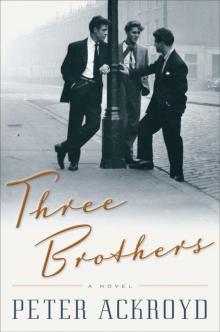 Three Brothers
Three Brothers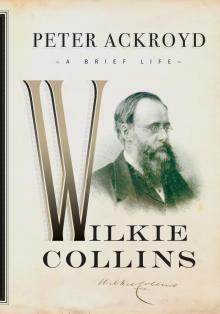 Wilkie Collins
Wilkie Collins Venice
Venice Poe
Poe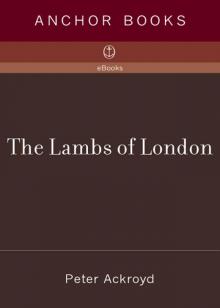 The Lambs of London
The Lambs of London London
London Queer City
Queer City Revolution, a History of England, Volume 4
Revolution, a History of England, Volume 4 Venice: Pure City
Venice: Pure City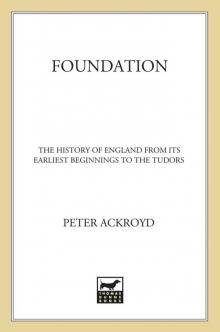 Foundation
Foundation Thames
Thames The Plato Papers
The Plato Papers The house of Doctor Dee
The house of Doctor Dee Rebellion: The History of England from James I to the Glorious Revolution
Rebellion: The History of England from James I to the Glorious Revolution Albion: The Origins of the English Imagination
Albion: The Origins of the English Imagination The Fall of Troy
The Fall of Troy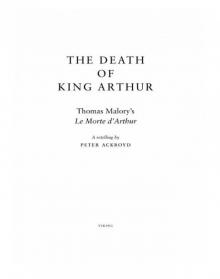 The Death of King Arthur
The Death of King Arthur The Trial of Elizabeth Cree
The Trial of Elizabeth Cree London: The Biography
London: The Biography The Casebook of Victor Frankenstein
The Casebook of Victor Frankenstein Hawksmoor
Hawksmoor Charlie Chaplin
Charlie Chaplin London Under
London Under